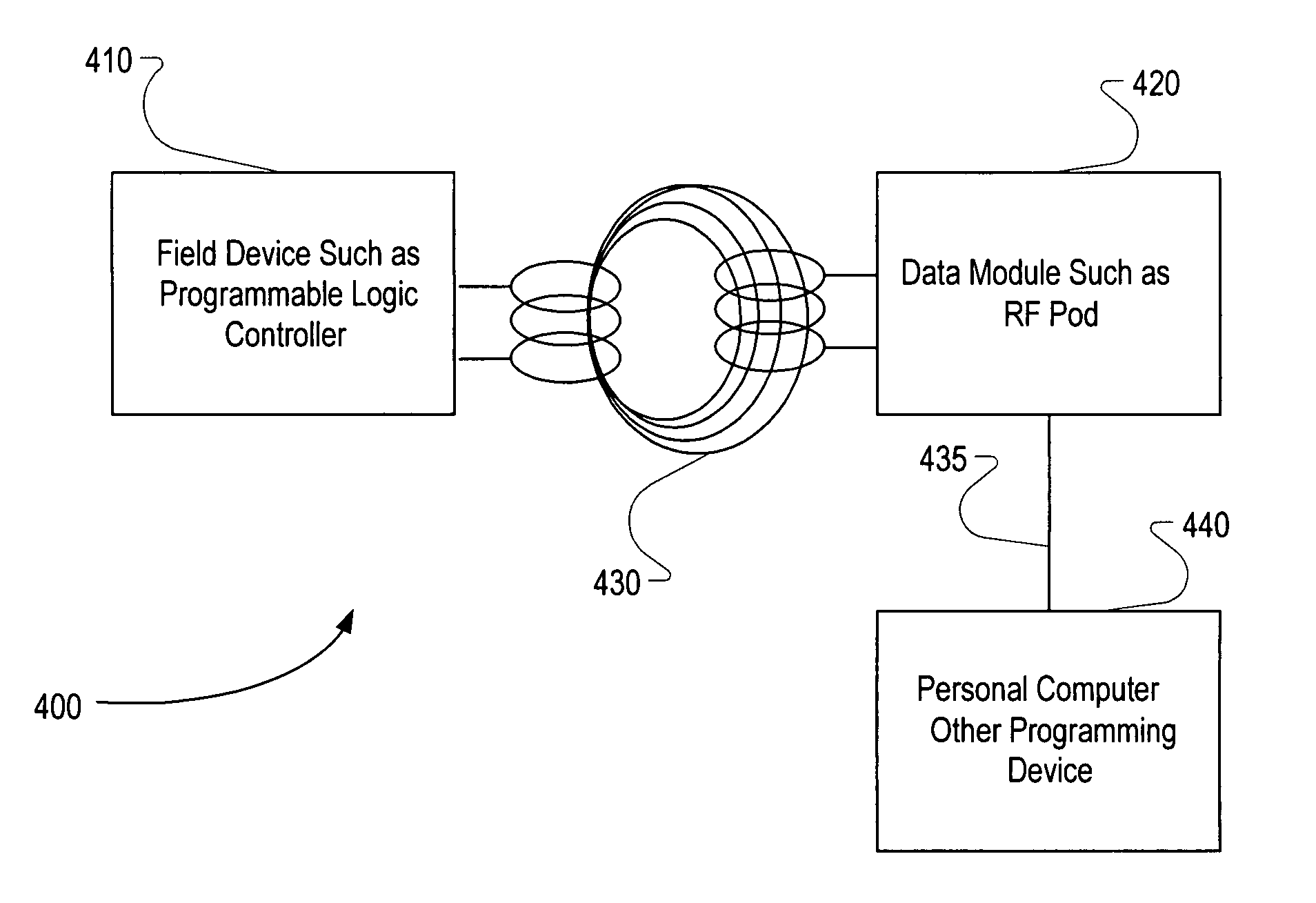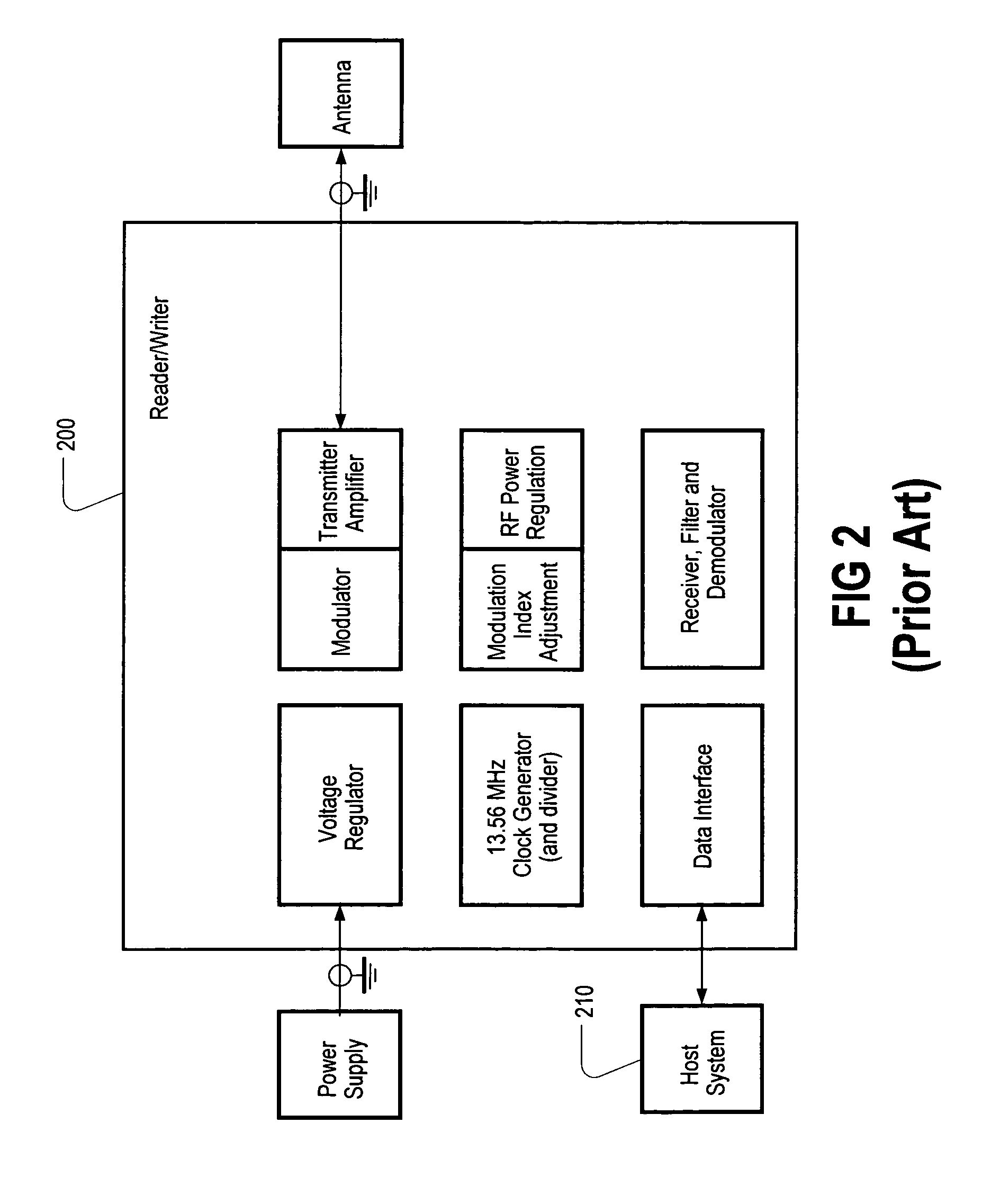Programming of industrial automation equipment using RFID technology
a technology of industrial automation and rfid, applied in the direction of electrical programme control, program control, electric controller, etc., can solve the problems of prone to errors, loss of volatile memory contents, and loss of existing barcode scanning data, etc., to achieve easy recognition, precise relative orientation, and easy recording data
- Summary
- Abstract
- Description
- Claims
- Application Information
AI Technical Summary
Benefits of technology
Problems solved by technology
Method used
Image
Examples
Embodiment Construction
[0031] Unlike traditional radio methods, infrared methods would not be at all comparable to the technique of the present invention because infrared is limited by line-of-sight issues as well as performance problems caused by the often-dirty industrial environment. At the top level, traditional radio methods significantly differ from the present invention by the frequency of the signals. The lower frequencies of traditional radio require large antennas that are difficult to fit into electronic packaging. RFID antennas, by comparison, take up about 1 square inch of printed wiring board (PWB) area. The nature of the RF field makes it very selective as to what devices will be affected by it. Unless an antenna is placed in close proximity to the transmitter (e.g. only a fraction of a centimeter away) it will not detect or respond to the signal. This makes RFID much more selective than traditional radio transmission.
[0032] As seen in FIG. 4, a system 400 includes the field device which m...
PUM
 Login to View More
Login to View More Abstract
Description
Claims
Application Information
 Login to View More
Login to View More - R&D
- Intellectual Property
- Life Sciences
- Materials
- Tech Scout
- Unparalleled Data Quality
- Higher Quality Content
- 60% Fewer Hallucinations
Browse by: Latest US Patents, China's latest patents, Technical Efficacy Thesaurus, Application Domain, Technology Topic, Popular Technical Reports.
© 2025 PatSnap. All rights reserved.Legal|Privacy policy|Modern Slavery Act Transparency Statement|Sitemap|About US| Contact US: help@patsnap.com



